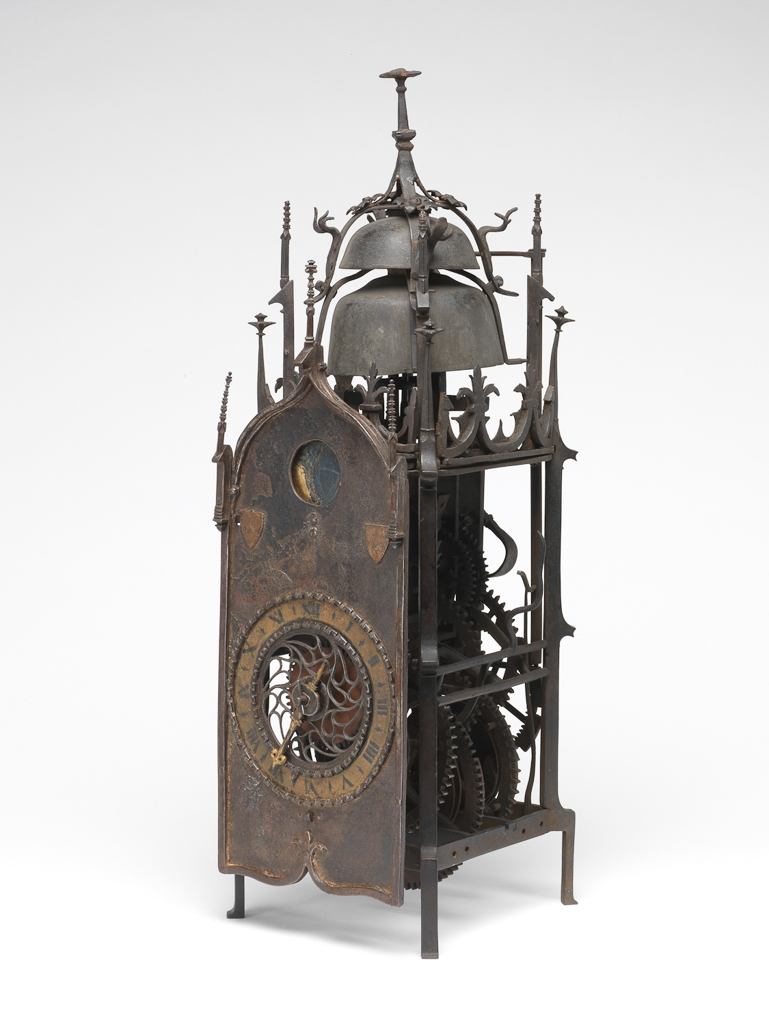Metalwork. Gothic Iron Clock. Unknown clockmaker. Probably German, but the clock bears some resemblance to the Swiss Liechti clocks of the sixteenth century. Iron clock with weight driven movement of fifteen hour duration and striking hours and quarters. Dial. Ogee arched-top dial plate with pierced tracery centre and chapter ring between two bands of simple Greek fret. The white painted chapter ring (now discoloured) with Roman numerals I-XII, and simple half hour markings in black. Pierced and shaped gilt single iron hand which may be of later date. In the arch, a circular aperture with a rotating disc behind to show the phases of the moon. At the base of the arch are two small raised shields with indistinct quarterings. Movement. Weight driven movement, of fifteen hour duration, and striking hours and quarters. The whole clock made of iron. The going train controlled by a verge escapement and foliot balance with moveable square weights for adjusting the timekeeping. The quarter striking train in the middle of the frame, with a vertical hammer arbor and strikes on the larger bell. Release of the striking is controlled by a nag's head lifting piece, so no warning action occurs. Spare holes in the bottom bars of the frame have been made later to increase the duration between winding by suspending the weights on pulleys and looping up the ends of the cords. The frame has typical Gothic decoration in the iron work and, as is normal with these clocks, there is no provision for enclosing the movement. There has been qjite a lot of repainting of the clock. Iron, height, whole, 53.3 cm, width, whole, 16.8 cm, depth, whole, 20.4 cm, circa 1500-1550.
Image data
- Accession Number: M.25-1938
- Photograph copyright © The Fitzwilliam Museum, Cambridge.
- Aperture: f/27.0
- Focal length: 120
- Camera: Hasselblad H3DII-31
- Photographer name: Andrew Norman
- Image height: 1025 pixels
- Image width: 769 pixels
- Processed with: Adobe Photoshop Lightroom 5.0 (Windows)
- Filesize: 400.37kB
- Exposure time: 1/180
- ISO Speed: 100
- Fnumber: 27/1
Key words
16th Century
chapter ring
clock
dial
dial plate
Fitz_AA
German
gilded
gilding
gilt
Gothic
iron
lunar
metalwork
moon
moon phases
movement
numbers
numerals
ogee
pierced
timepiece
tracery
watch
window




